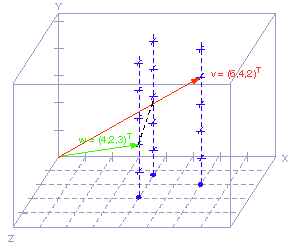Checking the Answer
|
The visual approach to 3D problems is hard, unless you actually have a 3D image in front of you. The correct answer calls for some figuring:
|

|
My visual estimate is that
if you "drop" the arrow head of w along a perpendicular to v,
you hit v at about 4/10 the length of v.
So k is about 0.4 and
It turns out that I was grossly wrong. Hope you did better.
|
The visual approach to 3D problems is hard, unless you actually have a 3D image in front of you. The correct answer calls for some figuring:
|

|